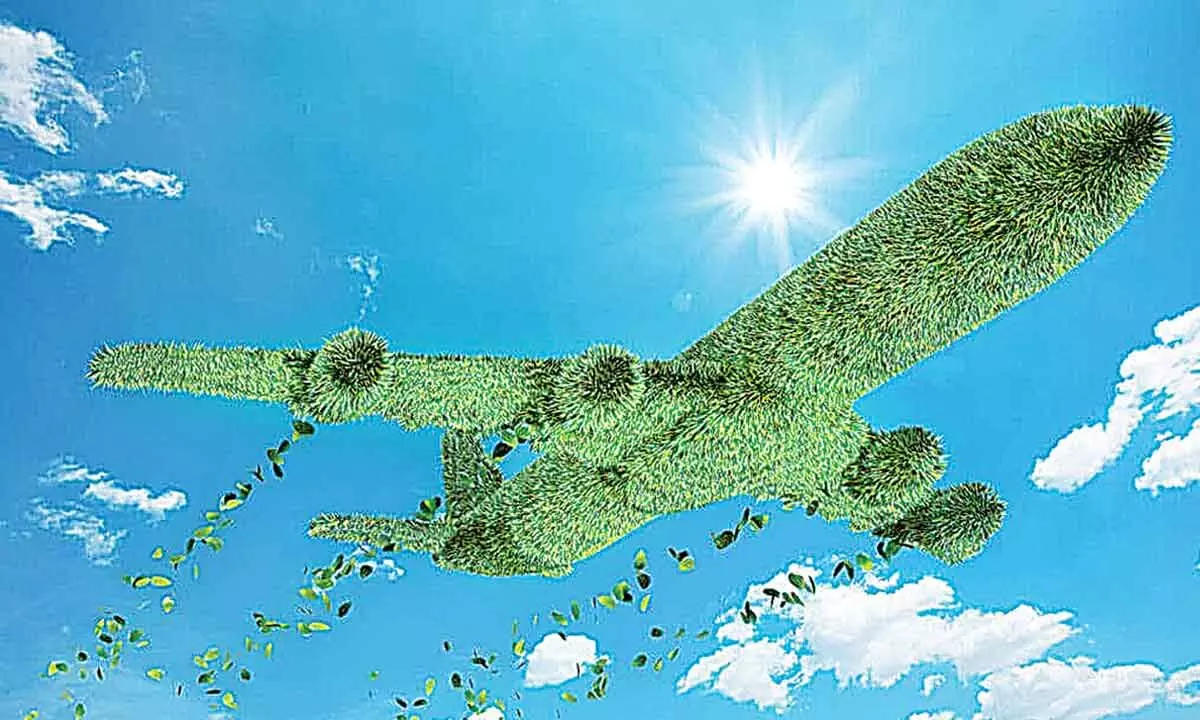Airlines doing more to achieve green aviation
A growing number of airlines committed to becoming carbon neutral in the decades ahead
image for illustrative purpose

Trade and tourism are important drivers of global economic development, and as more people become affluent, their appetite to travel the world increases. The aviation industry's climate action framework is designed to help find the balance between the two goals - economic growth through connectivity, and reduction of climate impact.
Improving sustainability is important to the airlines, their passengers and - most of all - to the planet. That's why airlines of all sizes are doing everything they can to reduce both fuel burn and carbon emissions. In fact, a growing number of airlines have committed to becoming carbon neutral in the decades ahead.
Each new generation of aircraft has double-digit fuel efficiency improvements, up to 20 per cent more fuel efficient than the previous one. This has led to today's modern aircraft producing 80 per cent less CO2 per seat than the first jets in the 1950s. But there is more work to do.
New technologies on the horizon have the potential to decrease greenhouse gas emissions from aviation significantly, and solutions being implemented today promise further savings. Even incremental savings offer significant benefits overall.
Fuel efficiency is critical to the future of the aviation industry, not just for environmental reasons but also financial ones. Fuel makes up over 30 per cent of airline operating costs.
To formalise and complement the market-driven improvement in fuel efficiency, the International Civil Aviation Organization (ICAO) agreed on a CO2 emissions standard in February 2016, which will apply to all new aircraft designs from 2020 and newly-built existing models from 2023.
Etihad's sustainability initiatives began with a focus on creating operational efficiencies. The airline quickly went on to unite industry leaders and build the most comprehensive, cross organisational aviation sustainability initiative ever undertaken. This umbrella programme, now in its third year, includes partnerships with Boeing, GE, Airbus and Rolls Royce, as well as a wide range of collaborations with pioneering new-technology organisations, academic researchers, smaller businesses and start-ups.
Etihad's flagship sustainability programmes include the Greenliner programme using the airline's fleet of Boeing 787 Dreamliners as flying test-beds, as well as the Sustainable50 A350-1000 launched earlier this year.
Honeywell is on the same path and has pledged to become carbon neutral by 2035. Its commitment also extends to applying our unique capabilities to helping our airline customers achieve their sustainability objectives with Honeywell Forge Flight Efficiency – the industry's most advanced and capable enterprise performance management solution.
More aircraft rely on Honeywell Forge Flight Efficiency to improve flight efficiency and reduce carbon emissions than any other solution. As an Enterprise Performance Management (EPM) solution, Honeywell Forge lets you streamline your entire flight efficiency program. Often replacing multiple-point solutions, Honeywell Forge connects stakeholders across the entire organization to provide a unified source of truth for all operations-related data.
Etihad Airways, the national airline of the UAE, has been named 'Environmental Airline of the Year 2022' in the annual Airline Ratings awards. The ranking recognises Etihad's industry-leading strategy to improve aviation sustainability for both the airline itself and the entire industry.
Manufacturers are increasingly using light-weight materials such as carbon composites to build aircraft and components. The Boeing 787 and 777X, Airbus A380, A220 and A350XWB aircraft all use these cutting-edge materials and technologies to deliver exceptional gains in environmental performance. Manufacturers of engines are also using highly advanced materials and processes such as additive layer manufacturing to develop new engines.
Technology on new aircraft can either improve fuel burn through aerodynamic efficiency (mainly airframe), or to reduce actual combustion use (mainly engine-related). Combined, these elements create a new aircraft with a reduced environmental impact.
Aircraft have a useful life of around 25-30 years, during which they will cover many millions of miles and carry millions of passengers or tonnes of cargo. Because of the long lead times for developing, designing and manufacturing modern aircraft, there tend to be 'waves' of new aircraft entering the fleet. We are currently in the middle of such a wave, with a number of new aircraft models coming into the system and replacing older, less fuel-efficient ones.
Longer term, several companies including Zunum and Wright Electric are developing more familiar commercial aircraft concepts. These would be regional jet sized, short-haul aircraft and could potentially be in service by around 2035, although more research is needed.
The quest to maximise range and payload (passengers or freight) while reducing the weight of the batteries and the energy density of stored electricity is a challenge. There is also a lot of research into hybrid options – combining the performance of liquid sustainable aviation fuel with the efficiency of electric propulsion. This may be an option for mid to long-range flights in future.

